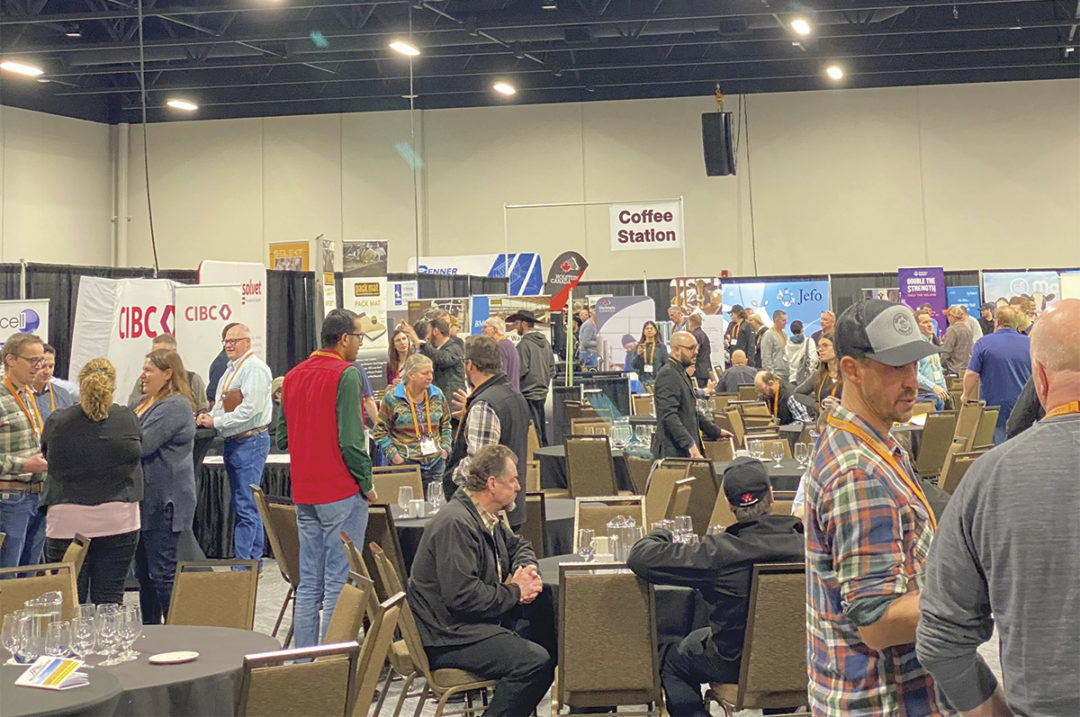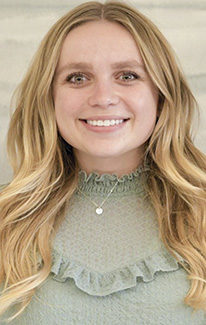A spring breeze and light snow welcomed dairy enthusiasts across the Canadian prairies to Red Deer, Alberta, March 5-8, for the Western Canadian Dairy Seminar. Undeterred by the negative-digit spring weather, participants settled in for a week full of engaging conversations and insightful presentations.
Sustainability in the sights of all across the industry
Sara Place of Colorado State University (CSU) kicked off the 41st conference with ag journalist Dianne Finstad in a keynote fireside chat, discussing common questions surrounding sustainability and the dairy industry. Place, who grew up on a New York dairy farm and is now associate professor of feedlot systems and AgNext team member at CSU, addressed a myriad of questions from Finstad regarding how the dairy industry will achieve net zero.
“Looking at the global perspective, agriculture is doing its part in reducing emissions,” Place said. “Cattle producers are doing a great job.” She discussed tools the industry can use to influence methane emissions on the cow side of things – feed additives and genetics being at the forefront. CSU has developed the AgNext Feed Additive Calculator Tool to estimate enteric emissions from beef cattle and will be releasing a dairy version in April 2024. Place encouraged producers to “work on things you can control” and to “be a capitalist” when it comes to creating green energy on-farm. She also mentioned the importance of keeping the cow at the center of each operation.
Attendees were whisked away to Manitoba, Saskatchewan and rural Alberta while viewing virtual farm tours that highlighted three dairies implementing green management practices.
Detimdale Holsteins of Alberta showcased their work with robotic technologies, highlighting not only an automated milking system but also a robotic feed kitchen, feeder and manure vacuum. A new barn allowed Arjan De Lange and his family to add an agritourism element to their operation, inviting consumers to visit the farm and learn more about dairy farming.
Saskatchewan native Mitchell Shultz of Shultz Family Farms spoke to the implementation of solar power on his dairy. In a little under one year, Shultz’s solar panels produced 75 megawatts of power, offsetting his costs for the 105 megawatts his dairy requires to function over one year. With a farm that has been in operation for over 100 years, Shultz was eager to diversify revenue streams and has been impressed with solar power thus far.
Clanman Jerseys of Manitoba grazes 60 cows on pasture and has an automated milking system. Sean Smith emphasized the importance of soil health for dairies and farms across the country, and explained the benefits he sees in both his cows and soil by grazing his herd – namely, improved soil, hoof and herd health.

Dairy producers (left to right) Arjan De Lange, Mitchell Shultz and Sean Smith field questions from the audience while Karin Orsel moderates. Courtesy photo.
De Lange, Shultz and Smith joined one another for a Q&A session following the virtual tours. The audience was curious to hear from these three producers about barn design, solar panel installation and production, and production of grazing cattle in an automated milking system.
When asked about challenges each producer is facing, answers ran across the board.
“Things go wrong and you have to adjust,” De Lange said. “I’m older and I watch my kids adapt to change without a problem, but the biggest challenge I see is adjusting to whatever is thrown our way.”
“Labor is always a problem,” Shultz said. “Water is a problem for us, which means making high-quality feed is always a bit of a challenge where we live.”
“We’re trying to figure out the best way to grow and harvest our crops,” Smith said. “We’re a smaller farm, so custom cutting operations aren’t a good fit, but we’re too small to buy equipment ourselves, and we don’t have the manpower either.”
Longevity still a priority in Canadian herds
Jose Eduardo Santos of the University of Florida spoke on managing cow health through late gestation and early lactation and the effects of disease in these periods on reproductive health. He emphasized the importance of managing body condition in past lactations for success in future lactations.
Barry Bradford of Michigan State University presented research done analyzing gestation length – the effects of both long and short gestation periods on cow health. Short gestation length was a contributing factor to poor transition periods and had a high correlation to cull rates.
Whether new research was presented or different management tactics were discussed, one question was consistent throughout the conference: How will this affect the longevity of a cow? Regardless of the content shared, Canadian producers are still prioritizing longevity of their herds while balancing production.

Attendees enjoyed free milk throughout the conference. Photo by Matti McBride.








